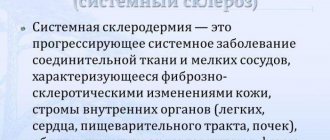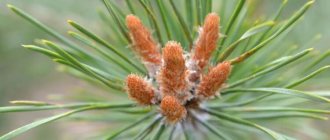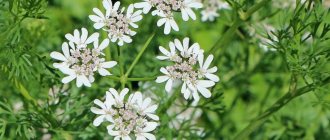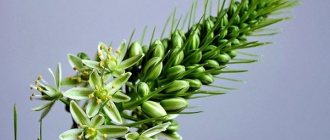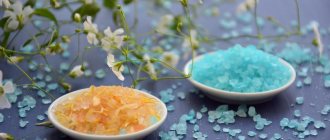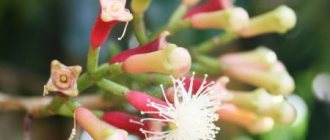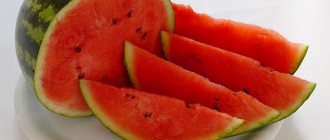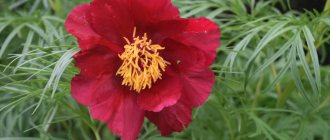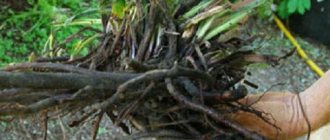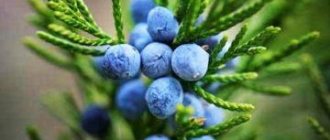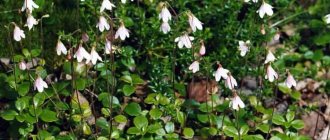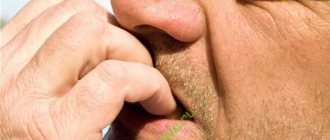What does lofant look like and where does it grow?
Polygonum (another synonym for the name of the herb) is endowed with a strong aroma. It blooms for a long time, so its collection period is long. This is due to the relative ease of its preparation.
Experts distinguish a large number of varieties. Some are distributed in the wild, others have found refuge in gardens.
The lofant plant, in its totality of types, is characterized by a tall trunk, reaching approximately 1 m. Leaves emerge from it, reminiscent in appearance to those produced by nettle.
The spikelet inflorescences are most often colored white, cornflower blue, orange, peach, pink, light purple or blue. They emit a strong anise or mint smell.
The roots extending from the trunk deep into the soil are thick and well developed. A large number of rhizomes are separated from them.
The distribution area of the grass is:
- Astrakhan region;
- Himalayas;
- India;
- Caucasus;
- Canada;
- China;
- Crimea;
- Moldova;
- Moscow region;
- Poland;
- USA;
- Siberia;
- Tibet;
- Ukraine;
- Ural and others.
Types and varieties
Lofant is a herbaceous perennial plant belonging to the Lamiaceae family. Experts believe that it includes 22 species, similar to one another.
Among others, these include the Anise Frant, which reaches sizes exceeding 1 m.
The Barbera species is small (up to 0.6 m) and produces orange flowers.
The mountain type forms numerous thickets.
The bush Polygonum Mexicana produces large, beautiful inflorescences.
The Tibetan or wrinkled variety is most commonly found in Asia.
Popular varieties are Astrakhan 100, aniseed lofant Snezhok, and Frant.
There are foreign versions of the Mnogokosnik. It is necessary to remember Blazing Sunset, which exudes a strong mint aroma, Desert Sunrise, which forms tall thickets with pink spikelets, or Sunset, which is a low, brightly flowering shrub.
Parts used and chemical composition
The grass and stem are used as medicinal raw materials used in traditional and folk medicine. They are collected in the summer, when the inflorescences fully open.
Fennel grass and other plant species contain:
- apigenin;
- vitamin C;
- gallic acid;
- genistein;
- hesperidin;
- tannins;
- iron;
- potassium;
- calcium;
- cinnamic acid;
- silicon;
- coumarins;
- luteolin;
- sodium;
- organic acids;
- tannin;
- carbohydrates;
- phenolcarboxylic acids;
- flavonoids;
- phosphorus;
- alpha bisabolol essential oil, etc.
The richness of the composition gives the healing raw materials astringent, anti-inflammatory, reparative and sedative qualities.
The herb activates mental processes, relieves swelling, stabilizes the functioning of organs and systems, and strengthens the immune system.
Chemical composition
Scientists began to actively study the medicinal plant only in the 21st century. Accordingly, grass cannot be called a sufficiently studied crop. It has been established that the aerial parts of the lofant contain:
- essential oils (methyl chavicol), which give the plant a special aroma;
- acids: malic, caffeic, ascorbic, citric;
- tannins;
- glycosides;
- phenolic compounds;
- flavonoids;
- alkaloids;
- B vitamins (for example, B1, B2);
- selenium, manganese, zinc, iron, copper, iodine, chromium.
Lofant can have both mint and lemon aroma.
The flowers of the plant are rich in quercetin, choline, and chlorogenic acid. The oil includes anethole, cineole, camphene.
Useful and medicinal properties of lofant
Polygonum has multiple positive effects on the human body. It effectively removes toxins, helps recovery from alcohol or food intoxication, improves the general condition of blood vessels, and eliminates the symptoms of hypertension.
Lofant herb actively fights infection, has antiviral properties and anti-inflammatory properties.
It is used to rejuvenate the skin and body, normalize mood, increase libido and male strength, stabilize the nervous system and enhance stress resistance.
Mexican mint, as the plant is also called, has hepatoprotective properties and helps strengthen the human body’s resistance.
The medicinal properties of raw materials are varied.
These include:
- antioxidant;
- antisclerotic;
- bactericidal;
- normalizing metabolism;
- pain reliever;
- enveloping;
- preventing the development of skin diseases;
- antitussive;
- antispasmodic;
- stimulating breast milk production;
- tonic;
- soothing;
- helping to speed up the healing of burns or wounds, etc.
When should you not use lofant?
Despite the small number of contraindications, Mnogokosnik does not need to be used throughout the entire period of gestation and subsequent breastfeeding of the child.
If it must be used, you must first consult with your doctor and carry out therapy under his strict supervision. It is better to suspend lactation for the period of treatment.
You should not use lofant Tibetan honey plant for persistent hypotension in order to avoid the development of collapse.
Insufficient platelet content in the blood plasma is also a reason to completely abandon its use.
Patients prone to frequent allergic attacks should not be treated with Mnogokosnik.
Healthy people need to monitor the body’s reactions when treated with medications containing the plant. If discomfort occurs, swelling develops or dyspeptic symptoms are observed, then it is better to stop taking them. If the noted symptoms stop, it means that the patient is contraindicated for treatment with the prescribed drugs.
All people undergoing medication therapy containing such raw materials must first consult a specialist and undergo a full examination of the body.
Rules for using anise lofant
The medicinal properties of the herb anise lofanta have been well known to mankind since ancient times. The Indians used this plant to cure skin diseases and purulent wounds, and also used it for colds and disorders of the digestive system. In Europe, polygonum first took root as a honey plant and ornamental plant. But soon it became the subject of close attention of folk healers. Doctors recognized it as extremely healing and began to use it in their practice.
We recommend reading: Acacia: benefits and harms, medicinal properties
Recipe 1 (infusion). 2 tbsp. l. steam the herbs with 0.4 liters of boiling water in a thermos for 3 hours. Take half a cup three times a day, on an empty stomach.
Recipe 2 (tincture). Pour 200 g of grass with half a liter of vodka for a month. Strain and take 20 drops before meals three times a day.
Recipe 3 (gel for external use). Grind 100 g of green leaves with two tablespoons of olive oil in a mortar. Apply in a thin layer.
Recipe 4 (tea for hypertensive patients). Take in equal quantities: lofant + hawthorn flowers + motherwort + mistletoe + marsh grass. 4 tbsp. l. collection, pour a liter of boiling water overnight. Divide the resulting solution into three to four equal volumes and drink throughout the day. Take after meals, no earlier than an hour later.
Tinctures, decoctions, and many other healing agents are prepared from the stems and leaves of the plant. The Greeks were very fond of this plant to stimulate the appetite. Lofant anise is surrounded by many rumors and myths. Various miraculous properties are attributed to it, considering it a panacea for almost all diseases. This is an overly exaggerated opinion, although the herb has some healing properties.
Anise lofant can be bought dried in a pharmacy
Harm and contraindications of the lofant plant
It should be taken into account that Tibetan lofant has beneficial properties and contraindications.
Therefore it is necessary to list them. These include:
- Allergy.
- Pregnancy.
- Recovery period after chemotherapy.
- Benign neoplasms.
- Tumor processes.
- Increased convulsive readiness.
- Low pressure.
- Precancerous condition.
- Thromboembolism, etc.
For various oncological processes, Mnogokosnik should not be used. It equally actively helps both the renewal of healthy tissues and the growth of cancer cells.
Therefore, before starting treatment, it is necessary to undergo a series of laboratory and instrumental studies, and then obtain full approval from a specialist. Only he decides what beneficial properties and contraindications the anise lofant has for a given patient.
Useful properties of anise lofant
The components of the essential oil and other components of the raw material from Lofant anise have the following effects:
- bactericidal;
- tonic;
- diuretic;
- anthelmintic;
- antispasmodic.
The herb is known for producing antioxidant, immunostimulating, fungicidal effects. Supports blood vessels during atherosclerosis, hypertension, cleanses the body of toxins, and normalizes metabolism. There are references that the active substances of Lofant anise promote the growth of cancer cells. Traditional healers who have the plant in their medicinal arsenal are inclined to the opposite opinion.
Aniseed lofant is useful not only for humans. Housewives give the crushed grass to chickens, whose egg production increases with constant use. Goats also increase their milk yield if they are fed several stalks of anise grass per day.
Application in medicine
The quality of the Multi-Grid is widely used as stimulation of the internal processes of the human body, which is why it is called Northern ginseng. It helps recovery after operations and injuries, accelerates rehabilitation after nervous and physical stress, and enhances immune responses.
The plant increases a person’s performance, tones his intellectual sphere, prevents mood swings in menopausal women, and stimulates libido in men.
It removes harmful elements, normalizes metabolism, rejuvenates the body, and cleanses the blood.
The raw material relieves inflammation of the mucous membranes, eliminates cough and destroys infection.
It activates excretory and endocrine processes, makes bowel movements regular, normalizes digestion, and stabilizes the condition of blood vessels.
Medicines containing it make it easier to fall asleep and calm the nervous system.
Application of anise lofant
Fennel grass - this is the name of aniseed lofant known throughout the world. Its medicinal properties have found application in folk and official medicine in many countries. The plant is also used to prepare culinary masterpieces that surprise the most demanding gourmets with their delicate aroma.
Lofant anise in folk medicine
For medicinal practice, herbalists use the entire above-ground part of the plant. In addition to its general strengthening properties, anise lofant is well known as a healer of many diseases. With the help of the plant, the following problems disappear from the human body:
- headache;
- sleep disorders;
- nervous system disorders;
- high pressure;
- swelling caused by diseases of the veins of the lower extremities;
- liver pathologies;
- digestive problems;
- colds;
- weakened vision;
- hearing impairment;
- hormonal imbalance;
- inflammation of the genitourinary system.
We recommend reading: Are orchids harmful, properties, effects on humans
Lofant anise normalizes metabolism, increases performance, relieves fatigue, and neutralizes the effects of stress. Decoctions and infusions of the plant cleanse the human body and internal organs of waste and toxins. Their regular intake slows down the process of withering of body functions.
Plant preparations are used externally to heal burns and minor wounds. A gel made from fresh plant herbs even copes with fungal diseases. Due to its strong antioxidant properties, the herb is used in cosmetology and for the preparation of skin and hair care products.
Recipe 1 (rejuvenating mask). Take all ingredients 1 tbsp. l. and mix together: chopped lofant greens + cottage cheese + honey + sour cream. Apply for ¼ hour, rinse with herbal decoction.
Recipe 2 (hair mask). Rub the juice from the green lofant into the surface of the head, moisten the hair. Leave for half an hour and rinse.
Recipe 3 (mask for acne and blackheads). Dilute medicinal clay with lofant infusion. Apply the paste onto your face and keep it there until it dries. Wipe the skin clean with a decoction of the herb.
Recipe 4 (lotion). Mix infusions of lofant and chamomile in equal quantities. Pour 1 tbsp into the solution. l. medical alcohol. Keep in the refrigerator.
You can make tea from anise lofant - the drink stimulates the immune system well
Lofant anise in cooking
Freshly picked leaves and young shoots of anise lofanthus are added to salads, both vegetable and fruit, for Parkinson's disease, prostatitis and other health problems, and green smoothies and juices are prepared. The aromatic plant is often included in a variety of dishes:
- sauces;
- meat;
- fish;
- okroshka;
- bakery;
- mince for pies.
Polygonum flowers are used to make jam, compotes, tea and jelly. Added to various drinks and preserves to flavor the finished product.
What diseases does lofant help treat?
Indications for use of Mnogokosnik are:
- bronchitis;
- varicose veins;
- vegetative vascular dystonia;
- pneumonia;
- skin pathologies;
- laryngitis;
- migraine;
- baldness;
- frostbite;
- swelling;
- increased swelling;
- respiratory diseases;
- heart failure;
- persistent hypertension;
- injuries;
- tracheitis;
- tuberculosis;
- endocrine disorders.
Recipes
Traditional medicine often chooses the plant for the treatment of various diseases. Its raw materials contain many chemical and organic elements. It is rich in useful substances that have a positive effect on human health, so anise lofant promotes the full functioning of various body systems.
An infusion from it brings great benefits. The product is used to combat indigestion, treat skin damage, burns, rashes, barley:
- To prepare it, take 1 tbsp. l. chopped Mnogokosnik and pour boiling water.
- The thermos with the composition is left for half an hour and then filtered.
- Drink 0.5 glasses three times a day or wash wounds with it.
Lofant tincture activates the production of hydrochloric acid, has anti-inflammatory and wound-healing properties, improves the functioning of the gastrointestinal tract:
- Take 100 g of dried raw material and place it in 1 liter of medical alcohol.
- The bottle is placed in a cool, dark place for 21 days.
- The composition must be stirred regularly.
- Then it is filtered and drunk 1 tsp. 3 times a day.
- Externally, Anise and Tibetan types in the form of tincture are used for lotions.
Tea improves the patient's condition during respiratory infections. It has a mucolytic and soothing effect on the throat. The drink has a pleasant taste. It is used for arrhythmia, cough, flatulence, colds, irritability, indigestion:
- take 1 tsp. chopped and dried herbs in 0.5 liters of boiling water. Leave for a quarter of an hour and then drink throughout the day.
A decoction of leaves or stems is used in the treatment of pathologies of the nervous and digestive systems, and for cardiac diseases:
- You should take 40 g of dried parts of the bush per 200 ml of boiling water and place in a container made without adding metal.
- The composition is simmered over low heat for 10 minutes.
- It is then filtered and allowed to cool.
- Take 50 ml with honey 4 times a day for 2 weeks.
Lofant contains a large amount of essential oils. Their properties improve the condition of the epidermis. Multigrassroot has a sedative effect, tones the body, and eliminates insomnia. It allows you to get rid of toxins and destroy pathogenic microflora.
Its oil is sold in finished form in pharmacies or cosmetic chains. It is used according to the instructions included with the package.
To prepare a bath, take 100 g of the plant per 1 glass of boiling water. Leave for half an hour and then filter. Add the infusion to the prepared water. The composition helps rejuvenate the skin and strengthen the body's resistance.
Use in folk medicine
In folk medicine, Tibetan lofant is used to prepare decoctions and tinctures that perfectly strengthen the body. There are many different recipes for preparing infusions and decoctions.
Lofant tincture with alcohol - it can be used as a means of prevention. It is also excellent for the treatment of hypertension, diseases of the nervous and cardiovascular systems. It is recommended to take the tincture for those people who have suffered a stroke or heart attack. In small quantities, this tincture is used to prevent various viral and colds. With its help you can strengthen your immune system and cleanse your body.
To prepare the tincture, you will need:
- alcohol (40%) - 0.5 l;
- 200 grams of fresh lofant flowers or 50 grams of crushed dry ones.
The flowers must be filled with alcohol and the suspension placed in a transparent container, then placed in a cool place where light does not penetrate. The tincture should be shaken periodically, and it is kept for 30 days.
After the tincture is ready, it should be taken 30 minutes before meals, 1 teaspoon. This should be done three times a day. Please note that the tincture must be diluted with water. The course of treatment is a month. After it expires, you should take a break for 10 days, and then the course is repeated several more times.
If you want to strengthen your immune system, then you need to drink the tincture at night every day. To do this, you need to dissolve 2 teaspoons of tincture in 2 tablespoons of water. In this case, the course of treatment lasts a month. Then a break for the same period - and repeat the course again.
Water infusion is useful for inflammatory diseases of the genitourinary system and gastrointestinal tract. It also strengthens the immune system, activates the nervous system and heart.
To do this, you need to pour 2 tablespoons of lofant flowers with the same amount of boiling water, and then leave to infuse for half an hour. Then you need to strain the infusion and take 12 tablespoons three times a day. It is recommended to add 1 teaspoon of honey. Treatment lasts 2 weeks. The most effective is a fresh solution, so it is better not to store it in the refrigerator, but to prepare it every day.
It is recommended to drink tea from this plant for poor performance, sexual dysfunction, chronic fatigue and anemia. It is also very useful for those people who have suffered a stroke or heart attack. To prepare tea, pour boiling water (0.5 l) into 1 tablespoon of dried flowers. Leave to infuse for half an hour, and then drink three times a day, adding honey.
Gel from lofanthus leaves is effective in the treatment of skin diseases. To prepare this gel you will need:
- fresh crushed lofant leaves - 100 g;
- ricionyl - 30 g;
- olive oil - 2 tablespoons.
All ingredients must be mixed well and used as intended.
You can make your own pillows from lofant. Grass is great as a pillow filling. This is an excellent solution for combating fatigue, anxiety and insomnia. These pillows also reduce headaches.
Methods of application
Description of Lofant will be incomplete without mentioning its active use in home cosmetology.
A mask for a aging face can be useful. You need to take a fresh Mnogokosnik and grind it. The resulting raw materials are mixed with honey, sour cream, and cottage cheese. Apply this product to the skin and leave for 30 minutes. Then wash with water at room temperature without soap. At the end of the procedure, the surface of the tissue is wiped with a decoction of herbs.
If you have acne, use an infusion of the shrub and Chamomile in alcohol. They wipe the skin in the morning and evening before taking a shower. The medicine must be stored in the refrigerator.
The substances included in lofant help hair growth. You need to take fresh leaves and stems and make a paste out of them. It is wrapped in gauze and the juice is squeezed out, which is applied to the roots and rubbed into the surface tissues. Leave the mask on for half an hour and then wash off with a mild shampoo.
In cooking
The multi-grid is used to add to:
- jam;
- baking;
- canned food;
- lemonades;
- fruit drinks;
- meat stew;
- vegetable dishes;
- sauces;
- alcohol;
- fruit salads;
- berry mousses.
The flowers are used in making jam and making honey. Fresh leaves are included in sausages, meat and vegetable dishes, seasonings, and added to fish.
The dried and ground stem is introduced into jelly, compotes, liqueur, pudding, and dough. The seeds are used for salting and included in marinades.
At home
In the cosmetics industry, the plant is used to prepare hair conditioners, body creams, lotions and face masks.
One of the healing properties of Lofant allows you to obtain honey from its flowers, which has a delicate taste.
The polygonum is beautiful, so many gardeners plant it in their summer cottages to decorate the area.
Growing lofant
At the beginning of May, the soil should be prepared. It is carefully dug up and fertilized just before planting. Use formulations intended for honey plants.
There are differences in the various methods of reproduction:
- Sprouts are planted every 30 cm.
- If the division method is used, then the largest bush is cut into 4 parts in early September or April. They are placed in different parts of the garden.
- When propagated by cuttings, engraftment occurs immediately in the soil without water germination. Lofant will take root if planted before the beginning of September. In the future, this will become impossible due to the threat of frost.
- The use of seedlings is carried out using seeds collected in the fall. They are planted in containers or peat pots in May. Then the Polygonum is transferred to the garden soil. It blooms already in the first season.
- If you place seeds in the ground, then such actions are carried out in mid-spring, when the sun is already hot. They are deepened by 1.5 cm and then covered with greenhouse film. In late summer they begin to bloom for a short period of time. New seeds appear only in the second year.
Rules for the procurement of lofant raw materials
To prepare medicinal compositions, you need to use the upper part of the stem. Take fresh shoots that appeared during the formation of buds or flowers and cut them with pruning shears 10 cm from the ground. The shoot should not be longer than 22 cm. If the collection occurs twice during the summer, then the second time the shoot is separated, which is 20 cm from the soil.
Branches with spikelets are shaken off, tied in bunches and laid out on a clean sheet to dry.
After they stop releasing moisture, they are hung from the ceiling or placed in a basin. The place should be dark and well ventilated. It is allowed to use the dryer at temperatures up to +40 °C.
The criterion for a properly harvested plant is its bitter taste, fragility, tart smell,
Then the raw materials are crushed and packaged in dense bags. In order for it to be better preserved, it is worth taking an airtight material, for example, thick paper or glass.
It is advisable to use the herb within 12 months. After the expiration date, it will be unusable.
Source
Other useful and medicinal plants
Description of edible black nightshade, benefits and harms
Kalanchoe - medicinal properties and contraindications, how to use
Fenugreek - beneficial properties, contraindications, application
Red rowan - medicinal properties, contraindications, recipes
